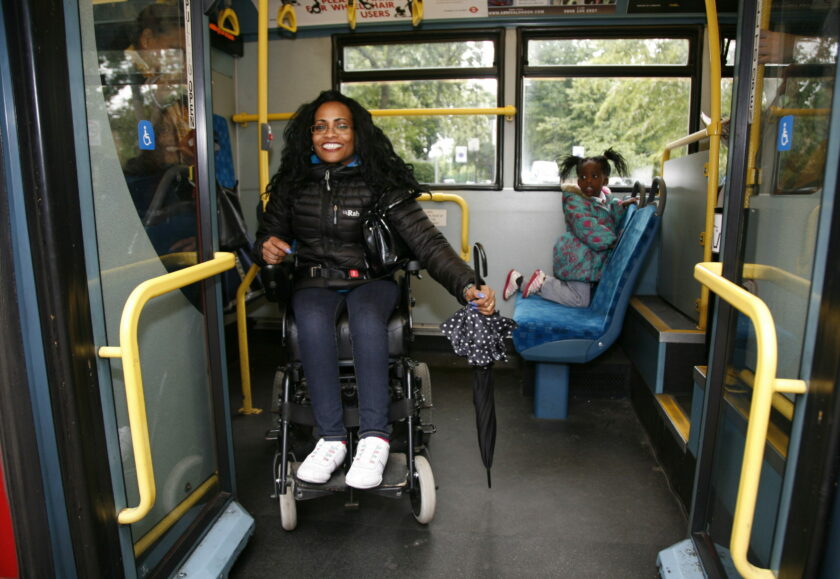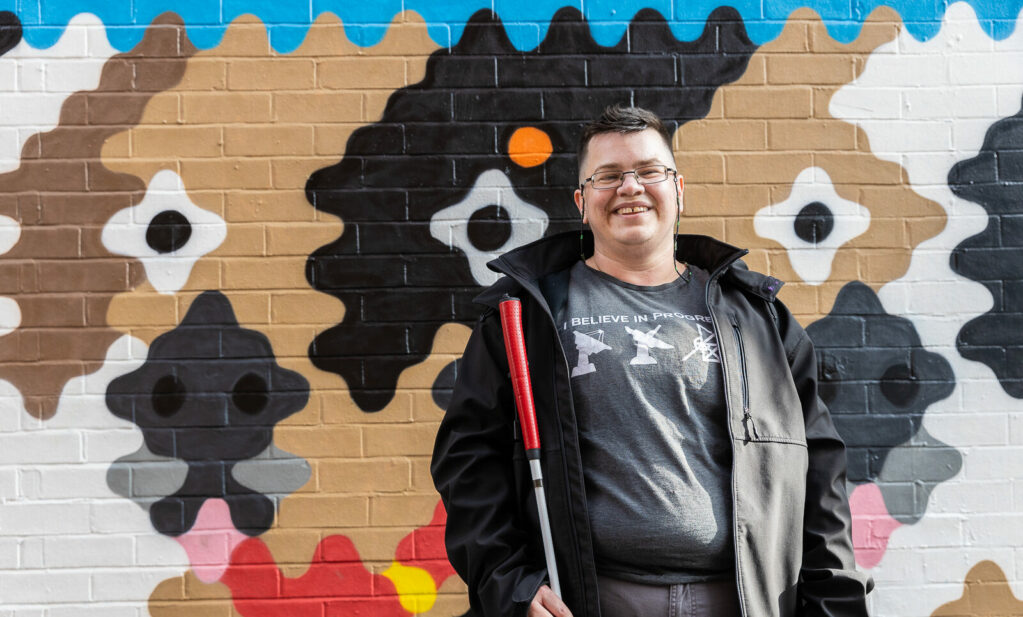London 2021 elections: Our manifesto for accessible journeys
Transport for All

Today, Transport For All has launched our ‘Manifesto for Accessible Journeys’, ahead of the upcoming London Mayoral Election and London Assembly Elections.
The current landscape
This is an election like none we have ever seen.
Originally scheduled to take place in May 2020 and postponed due to the unfolding COVID-19 pandemic, this election follows a year that has upended London’s transport system.
For disabled people, who have been disproportionally impacted by COVID-19 – accounting for 60% of all COVID deaths and being among the hardest hit by impacts of lockdown, the pandemic – and the response to it – has both exposed and exacerbated the existing inequalities in transport.
With the fall in passenger numbers having a catastrophic impact on TfL’s finances, an emergency revised budget was hastily drawn up. We were once again reminded of the fact that when money is tight, accessibility is always the first thing to go. 9 stations’ step-free access projects were halted indefinitely due to lack of funds available.
On the Underground, Turn Up and Go services were scrapped as TfL were unable to put practices in place to protect the health and safety of frontline staff while offering physical assistance and sighted guiding to disabled and visually impaired passenger. A Taxi service was instated in its place, but this was inefficiently communicated to staff, leading to many instances of disabled people being turned away.
Across the transport network, disabled people unable to wear a face covering have been victims of abuse and hate crime as a result of ‘peer-policing’ from fellow passengers.
Community Transport services such as Dial-A-Ride and Patient Transport have seen a surge in demand in a period where disabled people, many of whom are ‘extremely vulnerable’ to the virus and having to shield, are having to avoid public transport altogether. However these services have been chronically under-funded for years and are buckling under the strain of increased demand, with our members reporting delays and instances of being unable to book any journey whatsoever.
As individual journeys have adapted in response to the pandemic, Active Travel (walking and cycling), and initiatives which promote it have gained more traction. Across the UK we have seen pop-up cycle lanes installed, pavements widened, pedestrian-only school streets implemented, and Low Traffic Neighbourhoods created. There are now 95 LTNs created by local councils using TfL funding – part of the Streetspace for London plan – totaling £6.9 million.
Many of these schemes were implemented at pace, and the consultation and engagement processes that we would usually expect to see were not done. Equality and Impact Assessments (EQIAs) were often skipped altogether, or written without the necessary expertise in accessibility to properly identify potential impacts. This was confirmed in the damning High Court ruling on the Streetspace for London plan, which found that the needs of disabled Londoners were “not considered”, and described parts of the EQIA as “perfunctory or non-existent”.
While LTNs have positively impacted some disabled people, they have disproportionally and negatively impacted others, with 77% of participants in our research reporting an increase in their journey times and associated issues of more money being spent on taxi fares or petrol, more exhaustion or worsening of impairment, or journey time leading to delays or reduction in the care and support they receive.
Further to the negative impacts, LTNs on their own do little to remove the many barriers that make the pavements and streets unusable for many disabled people. The lack of dropped kerbs along pavements, the abundance of street clutter, pavements that are steep, uneven, or bumpy, the lack of tactile signage – all barriers that prohibit some disabled people enjoying walking/wheeling. This isn’t just an issue for disabled pedestrians: inaccessible cycle infrastructure is cited as the biggest barrier to cycling for disabled cyclists.
All of these changes, precipitated by the pandemic, have created deeper inequalities for disabled Londoners trying to get around the City. But let us be clear: normal – what we had before – was not accessible either.
There are 270 Tube stations in London, but only 81 of these are described by TfL as being ‘step-free’. A further half of these do not have level boarding from platform to train and so require the use of manual boarding ramps, which often results in disabled people being stranded on a Tube train after a breakdown in communication means staff are not ready to meet them with the ramp.
Disabled people, often visually impaired people with Guide Dogs, are routinely turned away from Taxis and Private Hire Vehicles.
There continues to be issues accessing buses, with disabled passengers consistently being put into positions of conflict with fellow Londoners when the priority wheelchair space is being used for other purposes.
Hazardous bus-stop-bypasses, Shared Space schemes and the total lack of regulation of micromobility services such as dockless bikes and e-scooters are putting disabled pedestrians in danger.
Disabled Londoners experience discrimination and inequality at every level of London’s transport system and streets.
This election comes at a precarious time, on the cusp of the multiple crises London is facing: the crises of the pandemic, the economic and unemployment crisis, the mental health fallout, and the ever-looming environmental disaster. When we discuss London’s recovery, we need to be bold, creative, and optimistic. But above all, we need to be inclusive, and build a London that works for everyone, including the 1.2 million disabled Londoners.
Our ultimate vision is for disabled people to be able to travel freely and with independence door to door, with the same options for modal or active travel as non-disabled people.
To do this will require sustainable, seismic change in how London’s transport is designed, delivered, and run. This is what we are asking of our next Mayor of London.
Our Mayoral Asks
- Put disabled people at the forefront of decision-making
- Remove barriers to public transport
- Pave The Way for inclusive streetspace that enables more disabled people to make Active Travel journeys
- Commit to a culture shift: prioritise accessibility for London’s recovery

